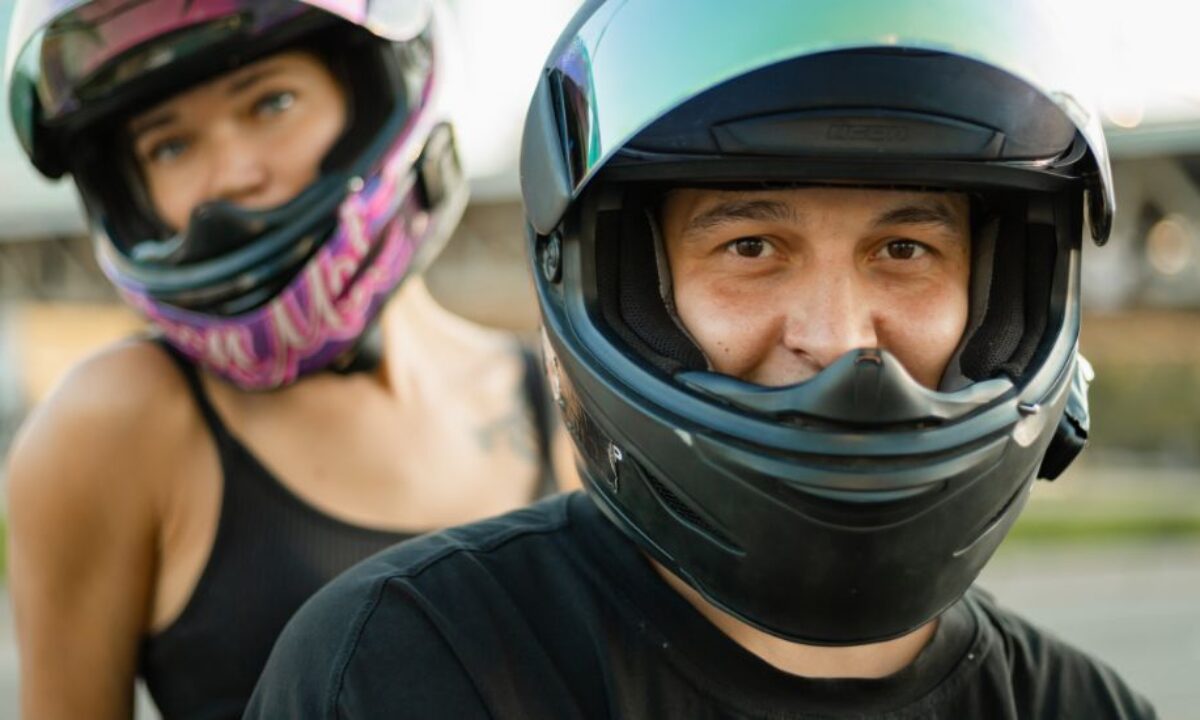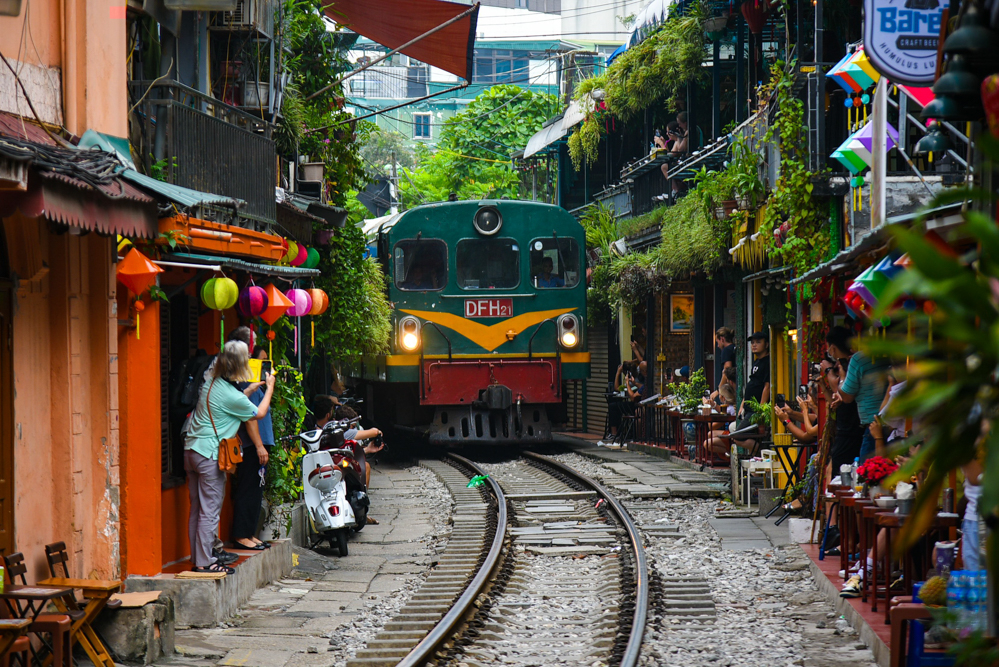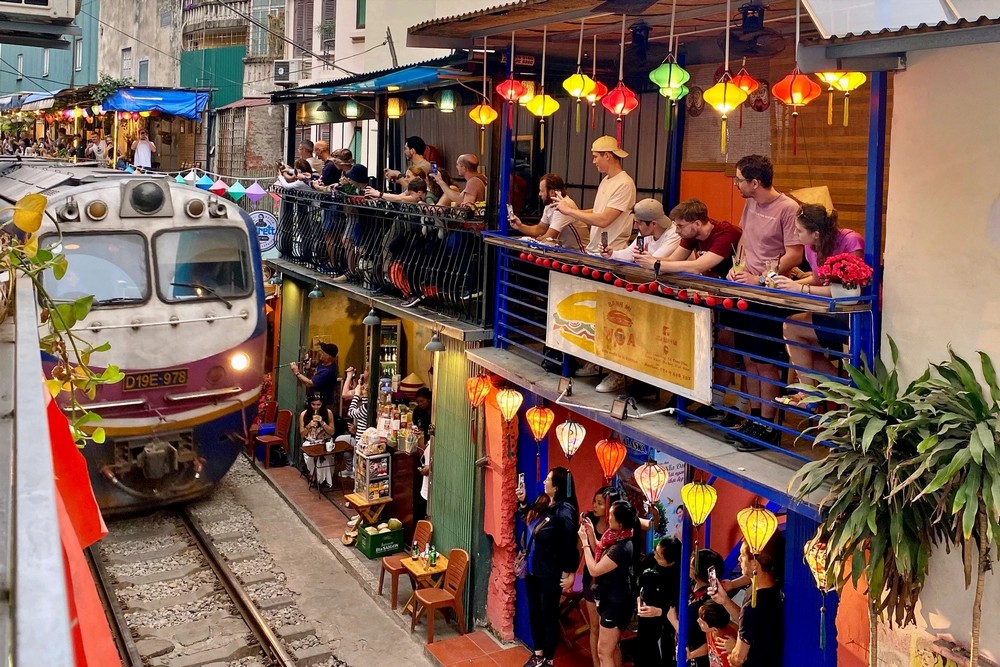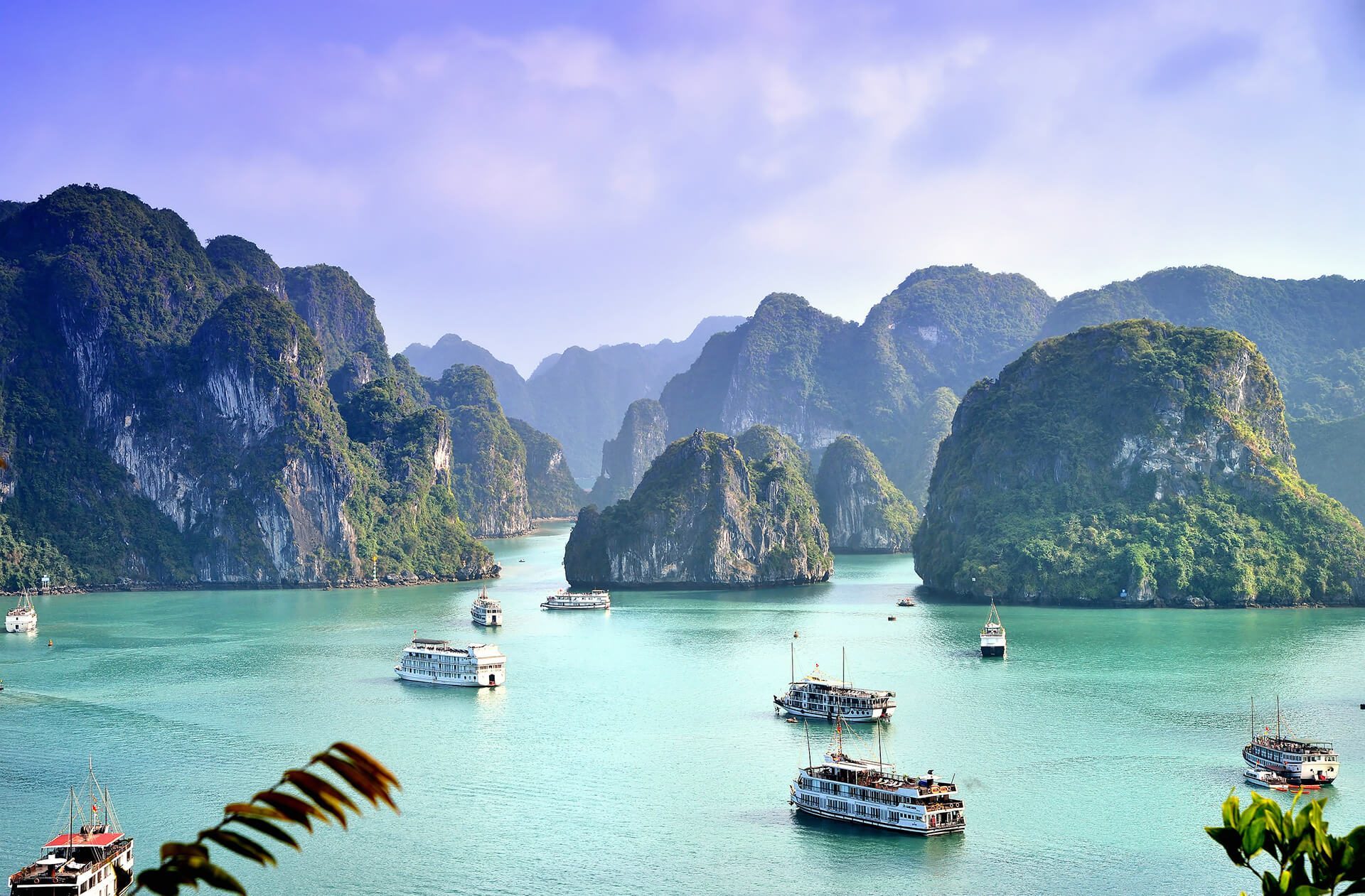
Vietnam Travel Tips: 15 Things to Know Before Going to Vietnam
If you are planning to visit Vietnam and have never been to Southeast Asia before, be prepared for some culture shock. Traffic is terrible, many people don’t speak English, the food is not what you’re used to, hygiene standards vary widely, and sometimes you may have to use a squatty pot.
But if you prepare yourself for the challenges and excitement ahead, you will fall in love with this beautiful, diverse, and amazing country! After traveling all over Vietnam, we decided to move to Saigon last year and our time here allowed us to narrow down our most important Vietnam travel tips.
Based on our experience living and traveling to many places in Vietnam, we have listed 15 things you should know before coming to Vietnam so you can avoid unpleasant surprises.
enjoy!
Disclaimer: This post may contain affiliate links. If you buy or book through one of our links, we may earn a small commission (don’t worry, it’s at no extra cost to you).
1. Apply for a visa before coming to Vietnam

If anyone wants to steal Nick’s identity, please provide Nick’s passport photo
Unlike neighboring Thailand and Cambodia, most tourists cannot simply travel to Vietnam and set foot in the country. All nationalities outside of Southeast Asia require some type of visa or approval letter before traveling to Vietnam.
Fortunately, it is easier for citizens of most countries to obtain a visa through the new e-visa process or visa pre-approval at the border.
Unfortunately, the visa process in Vietnam has become even more complicated due to the rapid increase in travel agencies offering pre-approval services and competing online for your business. Many websites look official but are not official. Many of these sites have the word “government” or “government” in their URLs, which can be confusing.
The Vietnamese government has only one official electronic visa website: https://evisa.xuatnhapcanh.gov.vn/trang-chu-ttdt. If you want a 30-day single-entry e-visa, you should go directly to this URL.
However, if you want to stay longer than 30 days or want a multiple-entry visa, you need to choose an official-looking but unofficial travel agency to provide you with an approval letter before visiting Vietnam.
Most of them are legal, so your chances of being scammed out of a few dollars are relatively low. But it makes things confusing!
We can personally confirm the authenticity of http://www.vietnamvisapro.net/ as we have used them many times and have never had any problems.
Steps to get a 30-day single-entry e-visa
- Access website; https://evisa.xuatnhapcanh.gov.vn/trang-chu-ttdt. This is the only official government website. All the others look official but are run by tour operators.
- Upload an image of your passport data page and a passport photo (straight-up view without glasses).
- Pay the $25 fee by credit card.
- You will receive a registration code via email that you can use to check your e-Visa status.
- Please allow 3 business days for processing.
- Once approved, print your e-Visa and remember to pack it in your carry-on luggage!
Steps to obtain a 30-day or 90-day visa upon arrival
- Find an online service like http://www.vietnamvisapro.net/ or one of countless other options.
- Complete your visa application.
- Pay the fee.
- Wait 2 business days (usually less) to receive your approval letter.
- Print the approval letter.
- If you don’t have a passport photo yet, take one. If you forget this step, you can take photos at the airport for about $5/photo (but it’s best not to rely on this option).
- Pack your approval letter, passport photo, and cash. Make sure they are in your carry-on/hand luggage!
- At the airport, you will have to pay a stamping fee – $25 or $50, depending on the length of your visa (see below). Remember to bring US dollars in good condition – bills with no tears or writing.
Cost of applying for a Vietnam visa upon arrival
| passport | Pre-approve credit fees (pay in advance to VietnamVisaPros.net) |
Visa stamping fee (Pay upon arrival in Vietnam) |
| Entry once a month | $6 | $25 |
| Multiple entries in 1 month | $6 | US$50 |
| Every 3 months entry | 15 dollars | $25 |
| Multiple entries within 3 months | 20 dollar | US$50 |
Note: If you are a US citizen, you now have the option of a 6-month multiple-entry visa and a 1-year multiple-entry visa. The process is the same but the visa stamping fee is higher.
2. Best flight in Vietnam

Vietnam is a long and skinny country. The distance from Hanoi in the north to Ho Chi Minh City in the south is more than 1,000 miles and takes about 30 hours by car. Even after spending a full month in Vietnam, if you want to see all the sights in the Southern, Central, and Northern regions of Vietnam, you should plan to fly.
You might save a few dollars by taking the bus or train, but you’ll waste a lot of time traveling such long distances. Additionally, you can find very cheap domestic flights, especially if you book in advance. VietJet Air is a domestic airline famous for its cheap flights (though not the most punctual).
3. Prepare to prevent heat stroke (cold)
Whether you travel to the South, Central, or North of Vietnam, you will encounter hot and humid weather. The climate of the whole country is considered tropical or temperate subtropical. So if your hair is like mine and turns into a messy mop when there’s a bit of humidity, you’re doing it wrong. Additionally, any makeup you wear will be off your face within 30 seconds of stepping outside.
In general, summer and autumn can be rainy, especially if you visit Vietnam between July and November. In the north, temperatures can be quite cold in winter (December to November). 2), there is occasional snowfall in the mountains surrounding Sapa.
The Central region has warm weather all year round but summer can be unbearably hot. Be sure to consider this if you want to visit Hue, Hoi An, or Da Nang. With the summer heat, leaving an air-conditioned hotel room requires maximum effort.
Remember to check the weather in each city you plan to visit in Vietnam before going so you can plan (and pack) accordingly.
4. Learn a little Vietnamese

With friends like these, who needs English?
English is taught in schools in many countries in Southeast Asia so locals tend to speak multiple languages. This is especially true for people who work in stores, restaurants, hotels, or somewhere frequented by tourists. Many people want to learn English because tourism is considered a very lucrative profession. So, there will be no problem traveling without a vocabulary book or any basic conversational dialect.
But in rural areas of Vietnam, many people do not speak English. Or if there is, it’s very basic. Even in restaurants, stores, and some hotels, communicating to place an order or ask about the price of something can be difficult.
Plan to learn some phrases to solve this problem. “Hello” (pronounced “sin jow”) means “hello” and “thank you” (pronounced “kam on”) means “thank you.” The word you might most commonly use is “bia” (pronounced “bee-ah”), which means “beer.” Use Google Translate and pick up a Vietnamese conversation book to help you get around.
5. Crossing the street is scary
Just kidding, crossing the street isn’t that bad…
Traffic conditions in Vietnam are notoriously crazy. But it’s not because of cars, but more because of the thousands of motorbikes that dominate the roads, weaving in and out of traffic. The walk signals and white lines that usually indicate “pedestrian crossing” zones don’t have much use here. Motorcycles and cars are not allowed to stop to give way to pedestrians unless necessary.
Because motorcyclists do not follow traditional traffic rules such as avoiding sidewalks, riding on the right side of one-way streets, or waiting for red lights, they must be extra vigilant every time they try to cross the street.
In general, as soon as you see a traffic jam, you should start walking confidently and trust that cars and motorbikes will weave around you. They may not stop, but they won’t hit you. Drivers in Ho Chi Minh City seem to do better with this, while drivers in Hanoi are less effective. In all cases, please proceed with caution and do not expect that normal pedestrian rights at home will also apply in Vietnam.
6. Get a Vietnamese SIM

Maybe she knows how to use the iPhone better than me
You will find that the Wi-Fi signal is strong even in remote areas of the country, including Sapa, Ha Long Bay, and Ninh Binh. If your phone is unlocked, you can buy a Vietnam SIM card and get 60GB of data for about 150,000 VND (about 6.50 USD). 4G service works well almost everywhere.
No need to upgrade your cell phone service from a domestic plan to an international plan when visiting Vietnam!
Viettel, MobiFone and Vinaphone: Which is better?
During many trips to Vietnam, we used Mobifone, Viettel, and Vinaphone. We recommend Viettel – it’s easily the best Vietnam SIM card for tourists.
7. Cheap
People rave about cheap massages in Southeast Asia but have never been interested in getting a haircut.
It’s important to note that you can certainly spend a lot of money and find luxury travel and accommodation when visiting Vietnam if you choose. But if you’re on a modest budget like us (we usually spend $80-100 a day for the two of us), it’s really easy to do here.
You can find cute boutique hotels for $30-$40/night, as well as very comfortable Airbnb for around $20-$25/night. If you live in Vietnam long term, you can rent an apartment or house for around 300-600 USD per month. Trains and buses are quite affordable and comfortable. If you use the Grab app instead of a taxi, you can go anywhere in the city for just a few dollars.
Food is also very cheap. If you don’t mind eating on a small plastic chair, you can get a full meal for around 2 USD. Even a luxury meal rarely costs more than $20 per person. Domestic beer usually costs less than 1 USD/can or bottle. If you plan to buy souvenirs, you will need to bargain. Start by offering 50% of their asking price and you’ll eventually hit the middle ground.
8. Check the toilet seat before sitting down
The steamy Vietnamese toilet seat makes me like…
The toilet situation in Southeast Asia takes some getting used to. Most bathrooms in Vietnam have Western-style toilets instead of squat potties (although you may occasionally encounter this type). But usually, you need to pay a fee to use them (usually 2,000 VND). And they don’t always have toilet paper. Most Vietnamese people like to use a spray bottle to clean their buttocks.
And there was water spraying all over the toilet. No one seemed interested in cleaning up after themselves. If I had $1 for every time I accidentally sat on a wet toilet seat in Southeast Asia, I could travel forever. Keep some tissues in your bag and wipe down your seat before sitting down.
9. Helmets are required by law

Nick’s dad is so cool wearing a helmet…
In December 2007, Vietnam enacted a comprehensive mandatory helmet law to help reduce the number of traffic deaths in the country. Vietnam is the country with the second highest number of deaths from traffic accidents in Southeast Asia, with 24.5 deaths per 100,000 people. Here motorbikes are more popular than cars, accounting for 95% of registered vehicles nationwide.
Laws are strictly enforced and today you will see almost everyone wearing them in the city. This helps. so many. The AIP Foundation estimates that 15,000 deaths and 500,000 injuries have been prevented in the 10 years since the law was enacted.
As a foreigner, you should also wear one during your visit to Vietnam. Not only when you rent a motorbike, you’ll need one if you’re driving one of the many Grab cars that dominate the streets. But don’t worry, they will provide an extra one for you to use.
10. Use Grab instead of taxi
Typical Grab boat
Speaking of Grab, you should plan to use this service instead of a taxi. Grab is the Uber of Southeast Asia. Just download the app and find a driver whenever you need a ride. Keep in mind that this usually takes longer than hailing a taxi, and drivers sometimes cancel, but it will be much easier than negotiating a taxi price before departure. And much cheaper!
You can upload your credit card information or choose to pay in cash for each trip. Visiting the city rarely costs more than 2 USD. If you use Grab during your visit to Vietnam, you’ll save a lot of time, money, and hassle – trust us!
11. Don’t expect to walk on the sidewalk
Try walking along this sidewalk…
Vietnamese cities have lots of wide sidewalks, so you might think you can escape the crazy traffic, right? Incorrect. You will find that most of the time you have to walk down the street because the sidewalks are lined with dozens of motorbikes or plastic restaurant tables.
Why Vietnam decided that motorbike parking is more important than providing space for pedestrians to walk is beyond me. To be honest, it’s annoying in touristy areas like Hanoi and Saigon. But as mentioned above, Vietnamese motorcyclists are very good at moving around pedestrians.
You’ll appreciate that towns like Hoi An have designated pedestrian areas, so you don’t have to worry about being hit by a motorbike while strolling along the sidewalk.
12. Get a debit card with international ATM fee reimbursement

5 Vietnamese dollars… no, not the first bill, but a whole bunch of money!
In Vietnam, there are few ATMs that can withdraw more than 3,000,000 VND (about 130 USD) and many ATMs can only withdraw 2,000,000 VND (about 85 USD) at a time. Additionally, you’ll pay a transaction fee of $1 to $5 per use. And it’s rare to find a restaurant, bar, or store that accepts Visa cards. If you do this, they usually charge an additional 3%.
We also found ourselves needing to visit up to five ATMs before finding one that worked. So don’t wait until the last minute to withdraw cash and don’t give yourself a short window of time. Surprisingly, we had the hardest time finding an ATM that accepted foreign cards in central Hanoi.
Remember to check with your bank before departure to ensure they reimburse international ATM fees. Also, check to make sure they don’t charge international fees. You’ll also need to call your bank to release the card for international use.
We like the Charles Schwab debit card, which has no international fees and refunds all ATM fees. The Chase Sapphire Preferred Credit Card is the best card for earning points when traveling. When we arrived in Vietnam, we used a Chase card to book hotels and travel, and a Charles Schwab card to withdraw money from ATMs.
13. It’s not as conservative as you think
Don’t feel like you have to leave the grill at home
Before coming to Vietnam, I had the impression that I needed to dress conservatively. While many people tend to cover their shoulders and knees, many young local men show more skin than I expected, regardless of the temperature.
Vietnam has looser regulations on visiting temples than some neighboring countries. There are signs asking tourists to cover up, but few people follow or enforce them.
You may feel a little uncomfortable walking around town wearing a half-shirt but don’t be afraid to bring shorts or a skirt for your Vietnam vacation.
14. It’s also not as communist as you think
It’s ironic how many private stores sell communist propaganda posters
Vietnam is one of the five remaining communist countries in the world today. However, when you spend a day as a tourist, you won’t encounter much evidence of communism. Most businesses are private and the country has a strong sense of capitalism.
Ho Chi Minh City is a bustling metropolis with many high-rise buildings and even its stock exchange. A new generation of young Vietnamese entrepreneurs is working to create exciting new startups in industries from technology to craft beer.
Ho Chi Minh (affectionately known as “Uncle Ho”) is still revered by the French and Americans as the liberator of Vietnam, but the tide seems to be turning quickly and decisively in the direction of capitalism.
In case you’re wondering… the other four communist countries are China, Cuba, Laos, and North Korea.
15. Remember – This is an American War

This is not called the Vietnam War. We are invading their country after all.
But don’t worry – relations between the United States and Vietnam were normalized in the mid-1990s, thanks to the efforts of then-President Bill Clinton and Senator John McCain. McCain served as a prisoner of war for five years at Hoa Lo Prison in Hanoi during the war.
Today, when the war against America is a distant memory, you will find that the Vietnamese have no ill will towards the Americans. If someone knows you’re American, they may start telling you about their extended family currently living in the United States. During the war, many Vietnamese in the South worked for the United States Army, and when American troops finally withdrew from Saigon, they were granted asylum in the United States.
That’s it – 15 Vietnam travel tips! Do you have any suggestions when traveling to Vietnam? Let us know in the comments below.
Are you planning a trip to Vietnam? Please let me know if you need help







